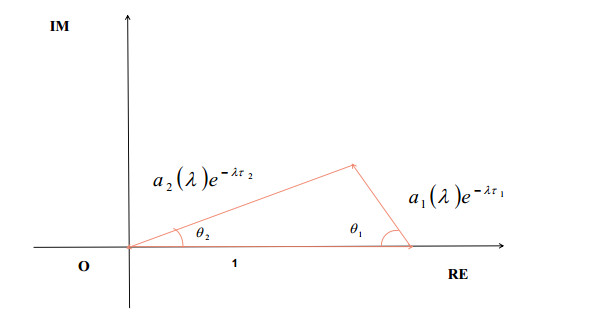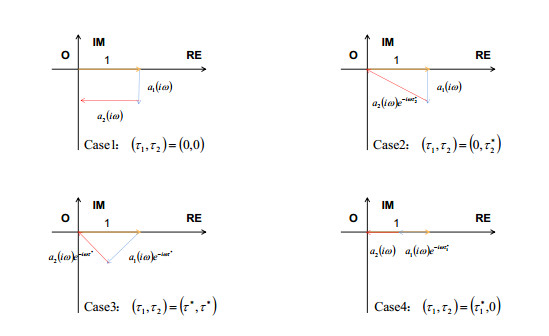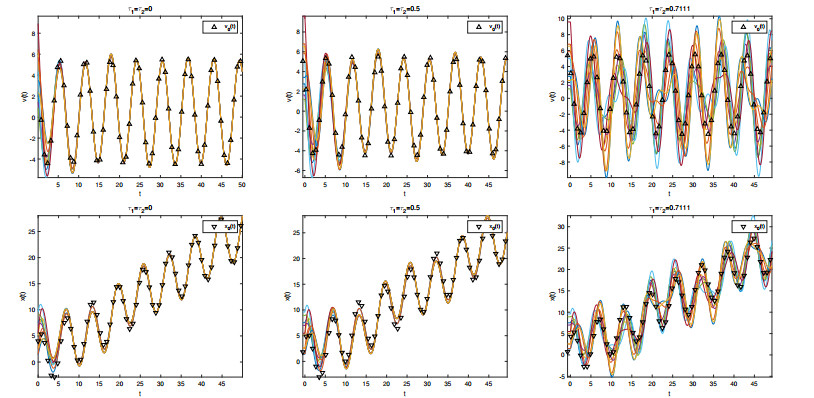1.
Introduction
In mathematical analysis Hardy operator is considered an important averaging operator as it plays a vital role in many branches of mathematics, such as complex analysis, partial differential equations and harmonic analysis (for example, see [2,7,8,10,29]). In [6], Hardy introduced the one-dimensional Hardy operator
for a measurable function f:R+→R+. The operator in (1.1) satisfies the below inequality
where the constant q/(q−1) is sharp. An extension of the operator H on higher dimensional space Rn was defined in [3] by Faris as
where |x|=(∑ni=1x2i)1/2 for x=(x1,…,xn). Furthermore, Christ and Grafakos [1] acquired the exact value of the norm of operator H defined by (1.3). Recently, Hardy operator has gained a tremendous amount of consideration, see for example [16,20,24,30,33,34] and the references therein.
In the past few decades there has been a relentless attention in p-adic models appearing in various branches of science. The applications of p-adic analysis are found mainly in the field of mathematical physics (see, for example, [15,26,27]). Importantly, many current researchers are paying a valiant effort to harmonic analysis on p-adic field [9,10,11,13,17,21,22,25].
Let Q be a field of rational numbers and p a prime number. We introduce a so called p-adic norm |x|p on Q by a rule |x|p={0}∪{p−γ:γ∈Z}, where γ=γ(x) is defined from the following representation
integers s and t are coprime to p. |⋅|p fulfills all the axioms of a real norm along with the following non-Archimedean property:
The field of p-adic numbers Qp is the completion of Q with respect to |⋅|p. Any nonzero p-adic number can be written in canonical form (see [28]) as:
where αj,γ∈Z,αj∈ZpZp,α0≠0. Interestingly, the series in (1.5) is convergent with respect to |⋅|p because |pγαkpj|p=p−γ−j.
The higher dimensional p-adic vector space Qnp consists of points x=(x1,x2,...,xn), where xi∈Qp,i=1,2,...,n, with the following norm
Let
be the ball and sphere respectively with center at a∈Qnp and radius pγ. If a=0, we may write Bγ(0)=Bγ, Sγ(0)=Sγ.
It is well known that the space Qnp is locally compact commutative group under addition, then there exists a translation invariant Haar measure dx which is normalized such that
where |A|H represents the Haar measure of a measurable subset A of Qnp. Moreover, one can easily show that |Bγ(a)|H=pnγ and |Sγ(a)|H=pnγ(1−p−n), for any a∈Qnp.
In what follows the p-adic Hardy operator
and its commutator
were defined and studied for f,b∈Lloc1(Qnp) in [4]. In the same paper, Fu et al. acquired the boundedness of p-adic Hardy operator and its commutator on Lebesgue spaces and Herz spaces. On the Morrey-Herz spaces, the p-adic Hardy type operators and their commutators are reported in [5]. For complete comprehension of p-Hardy operator and its commutator, we refer the publications [12,18,31,32].
The purpose of the current article is to discuss the weighted central bounded mean oscillations and weighted p-adic Lipschitz estimates of Hpb on two weighted p-adic Herz spaces and p-adic Morrey-Herz spaces. Throughout this article a letter C denotes a constant whose value may change at its different places. It is mandatory to recall the definitions of relevant p-adic function spaces before moving to our results.
Suppose w(x) is a nonnegative function on Qnp. The weighted measure of A is denoted and defined as w(A)=∫Aw(x)dx. The weighted p-adic Lebesgue space Lq(w,Qnp),(0<q<∞) is defined to be the space of all measurable functions f on Qnp such that:
The theory of Aq weights on Rn was introduced by Benjamin Muckenhoupt in [19]. Let us recall the definition of Aq weights in p-adic setting.
Definition 1.1. [23] A weight function w∈Aq(1≤q<∞) if there exists a constant C free from choice of B⊂Qnp such that
For the case q=1,w∈A1, we have
for every B⊂Qnp.
Remark 1.2. A weight function w∈A∞ if it undergoes the stipulation of Aq(1≤q<∞) weights.
Definition 1.3. Suppose w is a weight function and 1≤q<∞. The p-adic space CMOq(w,Qnp) is defined by
where
Definition 1.4. [22] Suppose w1 and w2 are weight functions, 0<r,q<∞ and α∈R. Then the two weighted p-adic Herz space Kα,rq(w1,w2) is defined as
where
and χk is the characteristic function of the sphere Sk=Bk∖Bk−1.
Remark 1.5. Obviously K0,qq(w1,w2)=Lq(w2,Qnp).
Definition 1.6. [22] Suppose w1 and w2 are weight functions, 0<r,q<∞, α∈R and λ≥0. Then the two weighted p-adic Morrey-Herz space MKα,λr,q(w1,w2) is defined as follows
where
Remark 1.7. It is evident that MKα,0r,q(w1,w2)=Kα,rq(w1,w2).
Definition 1.8. [23] Suppose 1≤q<∞, 0<β<1 and w is a weight function. The p-adic space Lipβ(w,Qnp) is defined as
where
2.
Weighted CMO estimates of Hpb on two weighted p-adic Herz-type spaces
The following section discusses the weighted CMO estimates of Hpb on two weighted p-adic Herz-type spaces. We open up the section with few lemmas which are useful in proving key results.
Lemma 2.1. [14] Suppose w∈A1, then there exist constants C1,C2 and 0<μ<1 such that
for any measurable subset A of a ball B.
Remark 2.2. If w∈A1, then it follows from lemma (2.1) that there exist constants C and μ(0<μ<1) such that w(Bk)w(Bi)≤Cp(k−i)n as i<k and w(Bk)w(Bi)≤Cp(k−i)nμ as i≥k.
Lemma 2.3. [23] Suppose w∈A1 and b∈CMOq(w,Qnp), then there is a constant C such that for i, k∈Z,
Lemma 2.4. [23] Suppose w∈A1, then for 1<q<∞,
where 1/q+1/q′=1.
Now we state the result about the boundedness of Hpb on two weighted p-adic Herz-type spaces.
Theorem 2.5. Let 0<r1≤r2<∞, 1≤r,q<∞ and let w∈A1. If α<nμq′, then the inequality
holds for all b∈CMOrmax{q,q′}(w,Qnp) and f∈Lloc(Qnp).
If α=0,r1=r2=q, then we have the following result.
Corollary 2.6. Let 1≤r,q<∞ and w∈A1, then
holds for all b∈CMOrmax{q,q′}(w,Qnp) and f∈Lloc(Qnp).
Theorem 2.7. Let 0<r1≤r2<∞,1≤r,q<∞ and let also w∈A1 and λ>0. If α<nμq′+λ, then
holds for all b∈CMOrmax{q,q′}(w,Qnp) and f∈Lloc(Qnp).
Proof of Theorem 2.5: First, by the definition we have
Since w∈A1⊂Aq, making use of Hölder's inequality along with lemma 2.4, we have
To estimate I, by the application of Hölder's inequality, Remark 2.2 along with inequality (2.2), we are down to
Now, we estimate II as follows
Next, applying Hölder's inequality to deduce
By the application of Hölder's inequality, inequality (2.5), lemma 2.4 and Remark 2.2, we are in a position to estimate II1.
Next task is to estimate II2. For this, we use Hölder's inequality, lemmas 2.3 and 2.4, Remark 2.2 and inequality (2.2)
From (2.3), (2.6) and (2.7) together with Jensen's Inequality, we have
Therefore,
In what follows we consider two cases, 0<r1≤1 and r1>1.
Case 1: When 0<r1≤1 and α<nμ/q′, we have
Case 2: Whenever r1>1, an application of Hölder's inequality with α<nμ/q′, we get
Hence, the proof of theorem is completed.
Proof of Theorem 2.7: From theorem 2.5, we have
By definition of weighted p-adic Morrey-Herz spaces and Jensen's Inequality along with α<nμ/q′+λ, λ>0 and 1<r1<∞, we reach at
3.
Weighted p-adic Lipschitz estimates of Hpb on two weighted p-adic Herz-type Spaces
The current section deals the weighted p-adic Lipschitz estimates of Hpb on two weighted p-adic Herz-type spaces. The outset of a section is with a lemma which is helpful in proving main results.
Lemma 3.1. [23] Suppose w∈A1 and b∈Lipβ(w,Qnp), then there is a constant C such that for i, k∈Z,
Now, we state the result about the boundedness of commutator of p-adic Hardy operator on two weighted p-adic Herz-type spaces.
Theorem 3.2. Let 0<r1≤r2<∞, 1≤q1,q2<∞,1/q1−1/q2=β/n and let w∈A1. If α<nμq′1, then the inequality
holds for all b∈Lipβ(w,Qnp) and f∈Lloc(Qnp).
If α=0,r1=q1=p and r2=q2=q, then we have the following corollary.
Corollary 3.3. Let 1≤q<∞, 1/q1−1/q2=β/n and w∈A1, then
holds for all b∈Lipβ(w,Qnp) and f∈Lloc(Qnp).
Theorem 3.4. Let 0<r1≤r2<∞, 1≤q1,q2<∞,1/q1−1/q2=β/n and let w∈A1. If α<nμq′1+λ, then
holds for all b∈Lipβ(w,Qnp) and f∈Lloc(Qnp).
Proof of Theorem 3.2: In a similar fashion as that of theorem 2.5, we get
For the evaluation of L, we apply Hölder's inequality, Remark 2.2, β/n=1/q1−1/q2,w∈A1⊂Aq1, and inequality (2.2) to get
In order to evaluate LL, we proceed as follows
The following preparation will do world of good to estimate LL1. Using Hölder's inequality, we have
To evaluate LL1, we apply Hölder's inequality, inequality (3.4), lemma 2.4 and Remark 2.2.
Next step is to evaluate LL2. For this we use Hölder's inequality, lemmas 3.1 and 2.4, inequality (2.2), and Remark 2.2 to get
Remaining proof is more or less same to the proof of theorem 2.5. Thus, we conclude the theorem.
Proof of Theorem 3.4: Let α<nμ/q′1+λ. By the definition of weighted p-adic Morrey-Herz spaces together with inequalities (3.2), (3.5), and (3.6), we have
Next by applying the similar arguments as in theorem 2.7, we get
So, the proof of the theorem is finished.
Acknowledgments
The authors extend their appreciation to the Deanship of Scientific Research at King Khalid University, Abha 61413, Saudia Arabia for funding this work through research groups program under grant number R.G. P-2/29/42.
Conflict of interest
The authors declare that they have no conflict of interest.


















 DownLoad:
DownLoad: